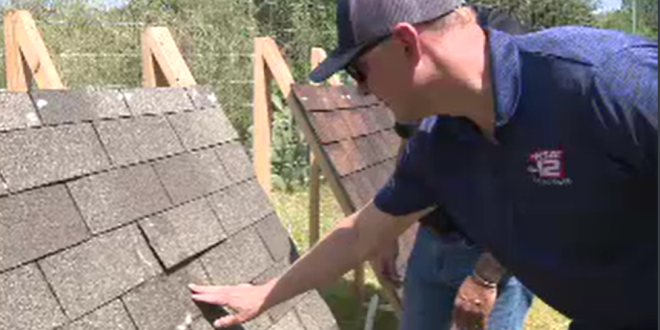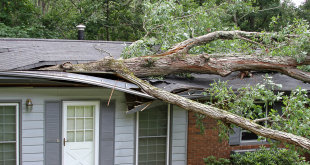Hailstorms, those unpredictable blasts of icy fury, can leave your home looking like it’s been through a war zone. Dented siding, cracked windows, and leaky roofs are just the beginning. That’s why it’s super important to make sure your home insurance policy has your back when these icy invaders strike. It’s not just about having insurance; it’s about understanding what your policy covers and proactively preparing for the worst. Let’s dive into how you can shield yourself from the financial fallout of a hailstorm.
Understanding Your Home Insurance Policy
Reviewing Coverage Limits and Deductibles
Okay, let’s talk numbers. Coverage limits are basically the maximum amount your insurance company will pay for damage to different parts of your house, like your roof, siding, and windows. Ignoring these limits is like going to a potluck without knowing how many people are coming – you might run out of food (or, in this case, coverage!).
Now, deductibles – that’s the amount you have to cough up out-of-pocket before your insurance kicks in. Think of it as your entry fee to the insurance payout party. A higher deductible means lower premiums, but you’ll pay more if a hailstorm hits. A lower deductible means higher premiums, but less out of your pocket when things get icy. Which way to go? It really depends on your risk tolerance and budget.
And there’s more! Pay attention to whether your policy offers “replacement cost value” (RCV) or “actual cash value” (ACV). RCV policies will pay to replace damaged items with new ones, while ACV policies only cover the depreciated value – meaning you get less money based on the item’s age and wear. With hail damage, RCV is generally the better option because, let’s face it, you want your home restored to its former glory, not its slightly-worse-for-wear state.
Identifying Exclusions and Limitations
Alright, this is where things get a bit tricky. Insurance policies aren’t always crystal clear, and they often come with exclusions and limitations. For instance, pre-existing damage might not be covered. So, if your roof was already a bit dodgy before the hailstorm, your insurance company might not pay for all the repairs. That’s just how it goes, unfortunately.
Faulty workmanship can also be a sticking point. If your roof was installed poorly, and the hailstorm exposes those shoddy skills, you might be out of luck. And some policies have limitations on specific materials or roofing types. So, if you’ve got that fancy, exotic slate roof, make sure your policy covers it adequately. Ignoring the fine print is like buying a gadget without reading the manual – you might miss something important!
Also, remember that preventative maintenance is crucial. A well-maintained home is less likely to suffer severe damage, and insurance companies like to see that you’re taking care of your property. So, keep those gutters clean and address minor repairs promptly. It’s worth it in the long run.
Documenting Your Property’s Condition
Taking Photos and Videos
Think of yourself as a home paparazzi! Before and after any potential hailstorm, grab your phone or camera and start snapping photos and videos of your home’s exterior and interior. Focus on those vulnerable areas – the roof, siding, windows, and gutters. Get up close and personal! I mean, not too personal with the gutters, but you get the idea.
Trust me, this documentation is gold when it comes to filing a claim. It provides concrete evidence of the damage and can help speed up the claims process. Once you’ve got your visual evidence, store it securely – back it up on a cloud service or an external hard drive. Imagine losing all that precious data – talk about adding insult to injury!
Maintaining Records of Repairs and Improvements
Keeping records of all repairs, renovations, and upgrades is vital. Did you replace your roof a few years ago? Keep the receipts, warranties, and contractor information. These records can substantiate your claims and demonstrate the value of your property. It’s like building a solid case file for your home.
Document the materials used and the dates of completion for every project. This information can be invaluable when negotiating with your insurance company. Think of it as your home’s resume – you want to show off its best qualities and prove that it’s been well-maintained. It shows you care, and that matters.
Preparing for a Hailstorm
Protecting Your Home Before a Storm
Alright, let’s get proactive. Before a hailstorm hits, take some simple steps to minimize potential damage. Trim those overgrown trees that could drop branches on your roof during the storm. Secure any loose objects in your yard, like patio furniture and flowerpots – you don’t want them becoming airborne missiles.
Consider investing in hail-resistant roofing materials and siding. They might cost a bit more upfront, but they can save you a lot of headaches (and money) in the long run. And if a hailstorm warning is issued, cover your windows and other vulnerable areas with plywood or storm shutters. It’s like wrapping your home in a protective shield.
What to Do After a Hailstorm
Okay, the storm has passed. Now what? First things first: assess the damage safely. Don’t go climbing on your roof immediately – wait until it’s safe and dry. Look for obvious signs of damage, like dents, cracks, and leaks.
Contact your insurance company promptly and report the damage. The sooner you file a claim, the better. Gather all your documentation – photos, videos, repair records – and have it ready to go. And be prepared to answer questions about the damage and the circumstances surrounding the hailstorm. Honesty is the best policy, and it will make the claims process much smoother.
Working with Your Insurance Company
Filing a Claim and Working with Adjusters
Filing a hail damage claim can feel like navigating a maze, but it doesn’t have to be that daunting. Be clear, concise, and provide all the necessary documentation. The clearer you are, the easier it is for them to understand your situation.
Insurance adjusters will come to inspect the damage. These folks are the insurance company’s representatives, so be polite but firm. Point out all the damage you’ve documented and ask any questions you have. Don’t be afraid to get independent estimates from reputable contractors. It’s always a good idea to get a second opinion. And a third? Maybe not, but two is a good start!
Negotiating Settlements and Appealing Denials
Sometimes, the insurance company’s initial settlement offer might not be enough to cover all the damage. Don’t be afraid to negotiate! Present your evidence, explain why you believe the offer is too low, and be prepared to compromise. It’s like haggling at a flea market – you might not get everything you want, but you can often reach a fair agreement.
If your claim is denied, don’t lose hope! You have the right to appeal the decision. Understand the reasons for the denial and gather any additional evidence that supports your claim. If necessary, seek professional legal advice from an attorney specializing in insurance claims. They can help you navigate the appeals process and fight for your rights. Don’t back down if you think you’re right!
So, there you have it. Ensuring your home insurance policy absorbs the financial impact of a hailstorm isn’t just about having a policy – it’s about understanding it, preparing for the storm, and advocating for yourself. Take these steps, and you’ll be well-equipped to weather any icy blast that comes your way. Don’t you think it’s worth taking a look at your own policy now? Just a thought! Maybe share your experiences with hailstorms, if you have any. Good luck!
 seeme
seeme




